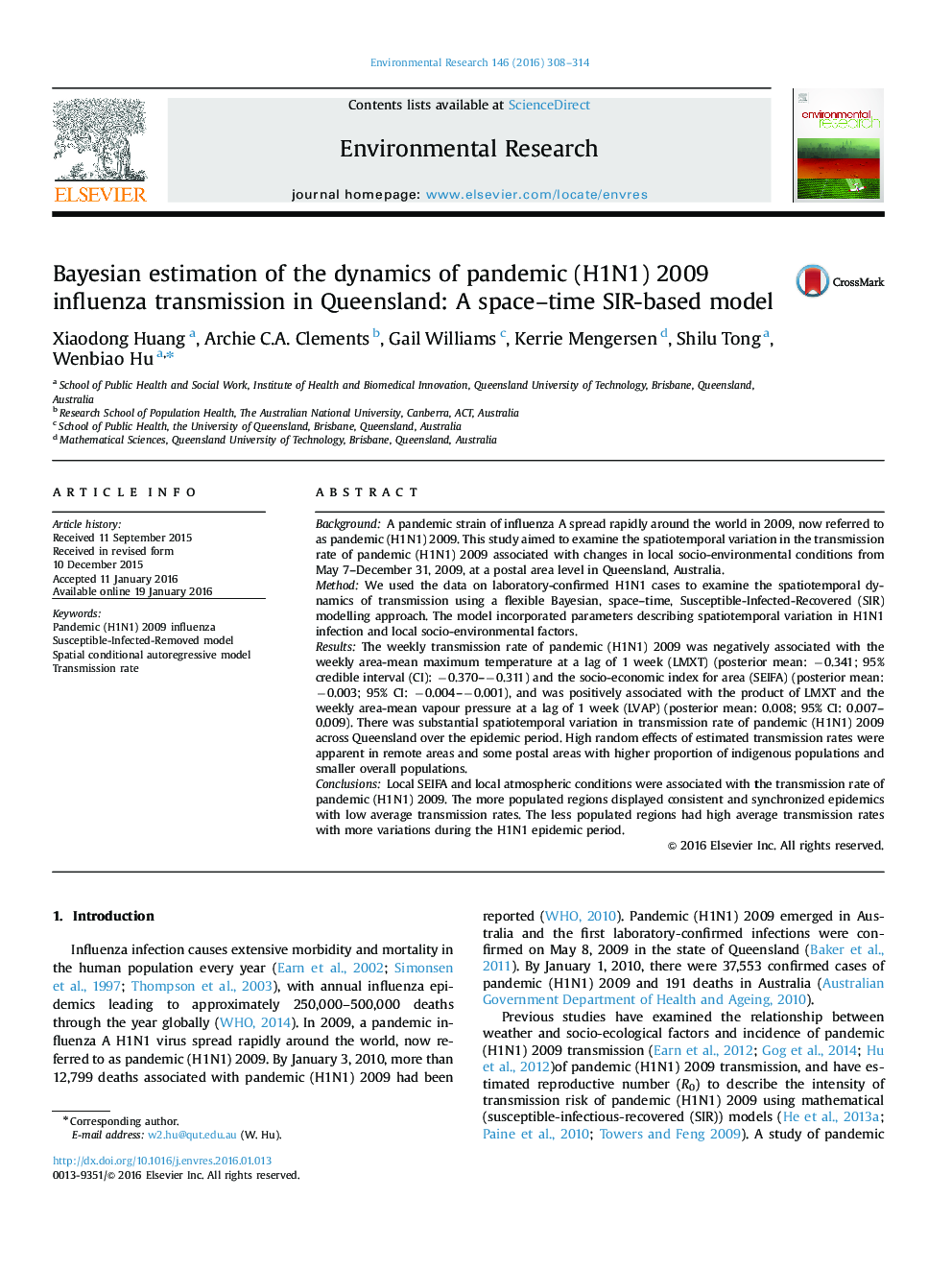| کد مقاله | کد نشریه | سال انتشار | مقاله انگلیسی | نسخه تمام متن |
|---|---|---|---|---|
| 6352111 | 1622557 | 2016 | 7 صفحه PDF | دانلود رایگان |

- There was strong spatiotemporal variation in H1N1 transmission rate.
- Transmission rate of H1N1 was associated with local socio-environmental factors.
- The less populated regions had high variation in H1N1 transmission rate.
- The more populated regions displayed consistent and synchronized epidemics.
BackgroundA pandemic strain of influenza A spread rapidly around the world in 2009, now referred to as pandemic (H1N1) 2009. This study aimed to examine the spatiotemporal variation in the transmission rate of pandemic (H1N1) 2009 associated with changes in local socio-environmental conditions from May 7-December 31, 2009, at a postal area level in Queensland, Australia.MethodWe used the data on laboratory-confirmed H1N1 cases to examine the spatiotemporal dynamics of transmission using a flexible Bayesian, space-time, Susceptible-Infected-Recovered (SIR) modelling approach. The model incorporated parameters describing spatiotemporal variation in H1N1 infection and local socio-environmental factors.ResultsThe weekly transmission rate of pandemic (H1N1) 2009 was negatively associated with the weekly area-mean maximum temperature at a lag of 1 week (LMXT) (posterior mean: â0.341; 95% credible interval (CI): â0.370-â0.311) and the socio-economic index for area (SEIFA) (posterior mean: â0.003; 95% CI: â0.004-â0.001), and was positively associated with the product of LMXT and the weekly area-mean vapour pressure at a lag of 1 week (LVAP) (posterior mean: 0.008; 95% CI: 0.007-0.009). There was substantial spatiotemporal variation in transmission rate of pandemic (H1N1) 2009 across Queensland over the epidemic period. High random effects of estimated transmission rates were apparent in remote areas and some postal areas with higher proportion of indigenous populations and smaller overall populations.ConclusionsLocal SEIFA and local atmospheric conditions were associated with the transmission rate of pandemic (H1N1) 2009. The more populated regions displayed consistent and synchronized epidemics with low average transmission rates. The less populated regions had high average transmission rates with more variations during the H1N1 epidemic period.
Journal: Environmental Research - Volume 146, April 2016, Pages 308-314